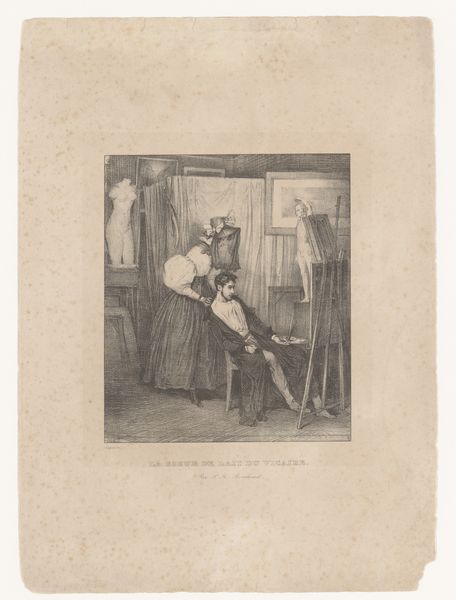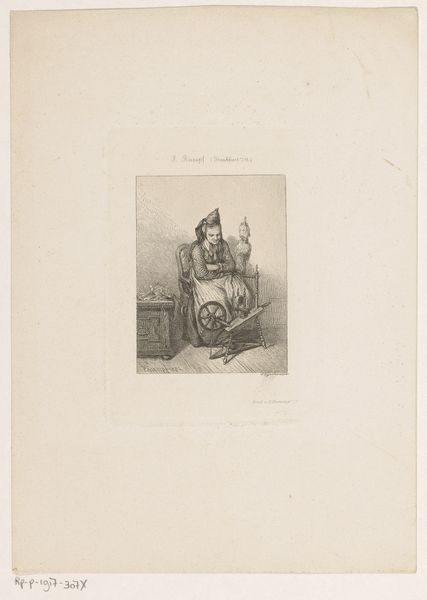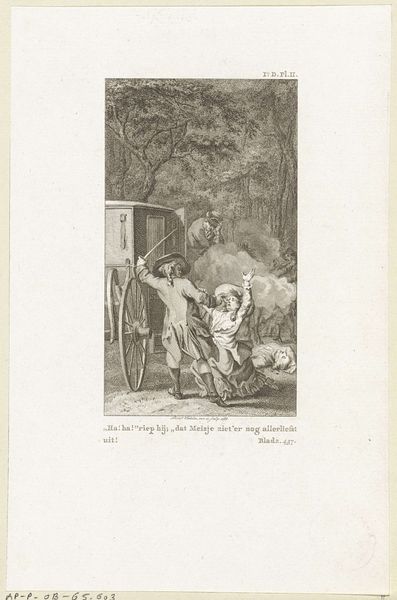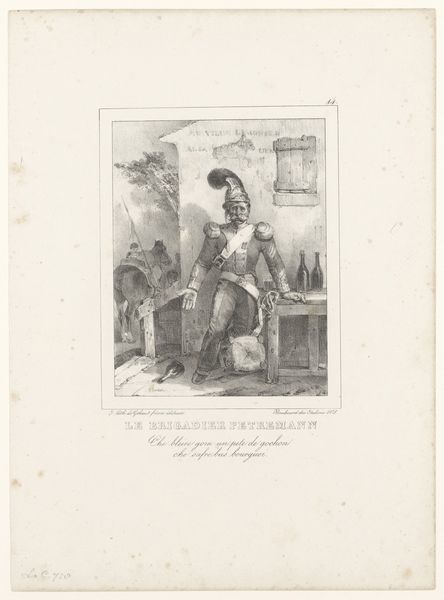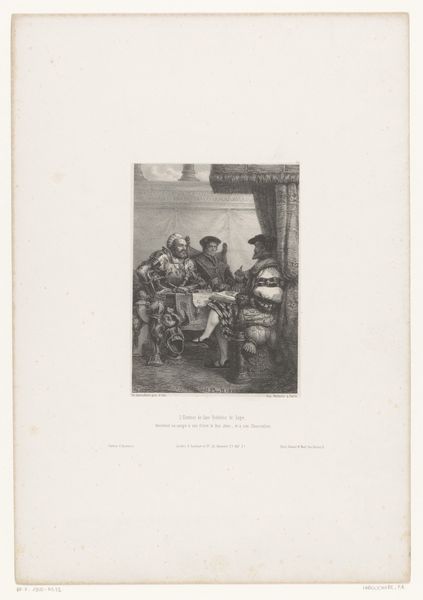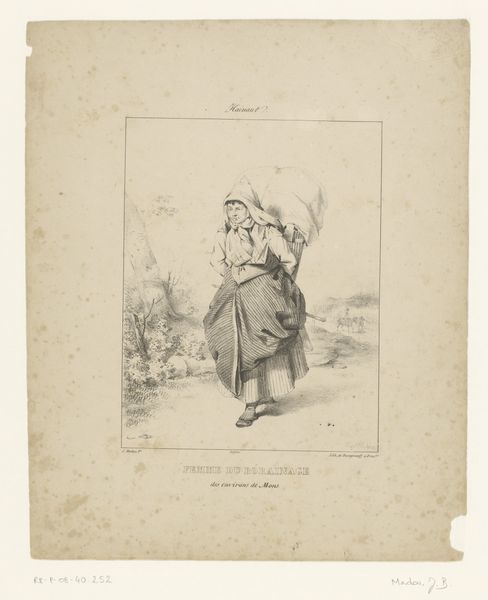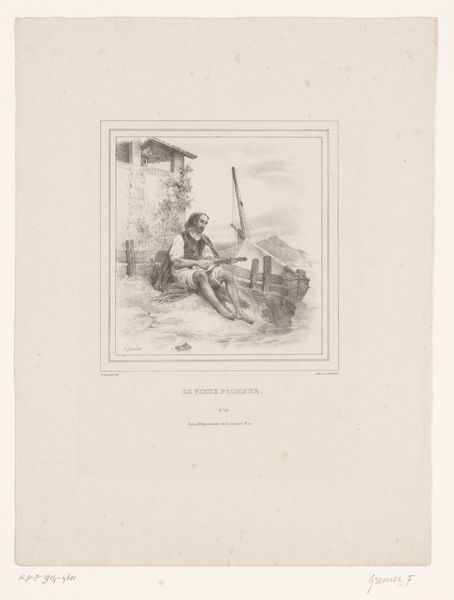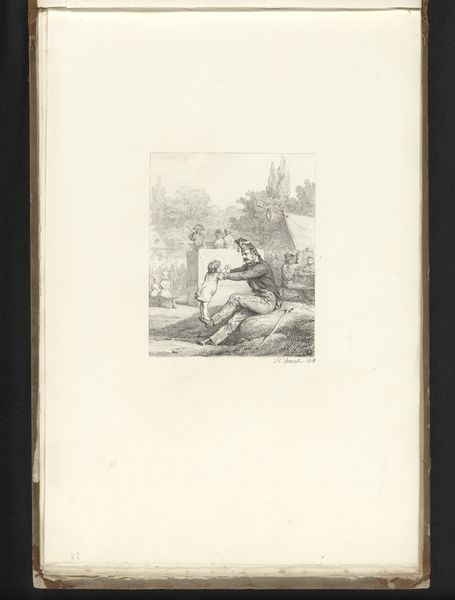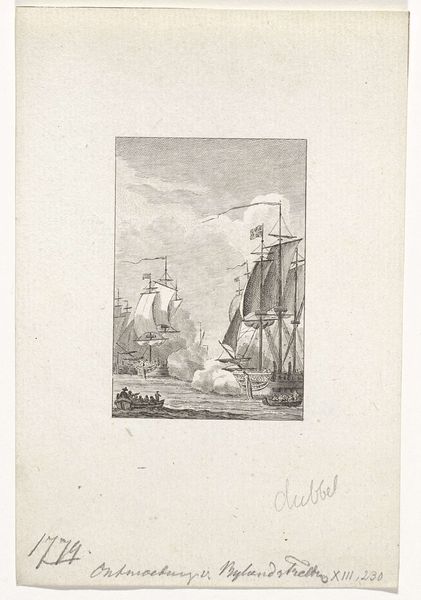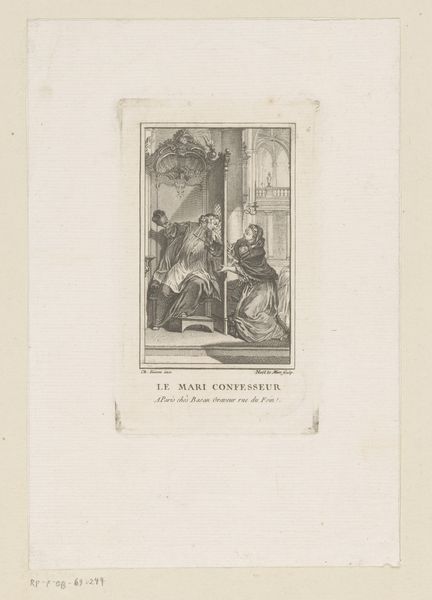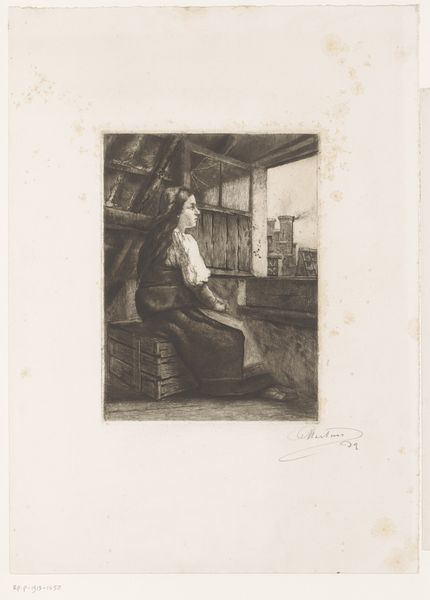
drawing, lithograph, print, paper
#
portrait
#
drawing
#
narrative-art
#
lithograph
# print
#
paper
#
romanticism
#
genre-painting
#
history-painting
#
academic-art
Dimensions: 192 × 153 mm (image); 365 × 274 mm (sheet)
Copyright: Public Domain
Curator: I find this lithograph by Auguste Raffet quite compelling. Executed around 1827-1828, the print is titled "Ces Croûtes-là en Font Manger D'autres," now residing at the Art Institute of Chicago. Editor: My immediate reaction is one of mild amusement. The scene is rendered with a somewhat chaotic charm. The figure at the center looks… intensely engaged, surrounded by artistic clutter. Curator: Indeed. Raffet's composition speaks volumes about the romantic vision of the artist in his studio. The setting is clearly meant to evoke the world of an artist during that period—academic and striving. Editor: The artist, though, is surrounded by what seem to be quite a few… grotesque depictions and busts that might point to the grotesque romantic era we are familiar with today. Are we looking at the idea of artistic merit itself, then, as perceived in Romanticism? Curator: Precisely. Note the satirical edge in the arrangement of figures and props—the title itself hinting at a degree of commercial reality versus the supposed artistic expression. What resonates deeply is the democratization of the artistic profession Raffet touches on. Editor: Then the suggestion is that there is commercial element implied behind what the general audience will call Art? He does, after all, wear a look of intensity that suggests a struggle. I see the skull in the corner, a classical symbol, which also underscores mortality. What else do we recognize? Curator: We see Romanticism heavily informing its symbolism—artists creating portraits that aim for the expressive, historical canvases romanticized for their narratives of the dramatic or sublime, genre paintings romanticizing every day lives, and history paintings inspiring greatness. Editor: This piece, then, captures a microcosm of society, of a rising class trying to "break bread", no less! There is a profound cultural commentary embedded here. Curator: Undoubtedly. And one rendered with deft precision and surprising layers of meaning in lithographic art of the era, reminding us that social satire always find ingenious paths through art history. Editor: It is a potent piece—not only from Raffet, but we see even Romantic artists finding inventive symbolism with historical weight behind even "frivolous" pieces like this. It's fascinating.
Comments
No comments
Be the first to comment and join the conversation on the ultimate creative platform.
